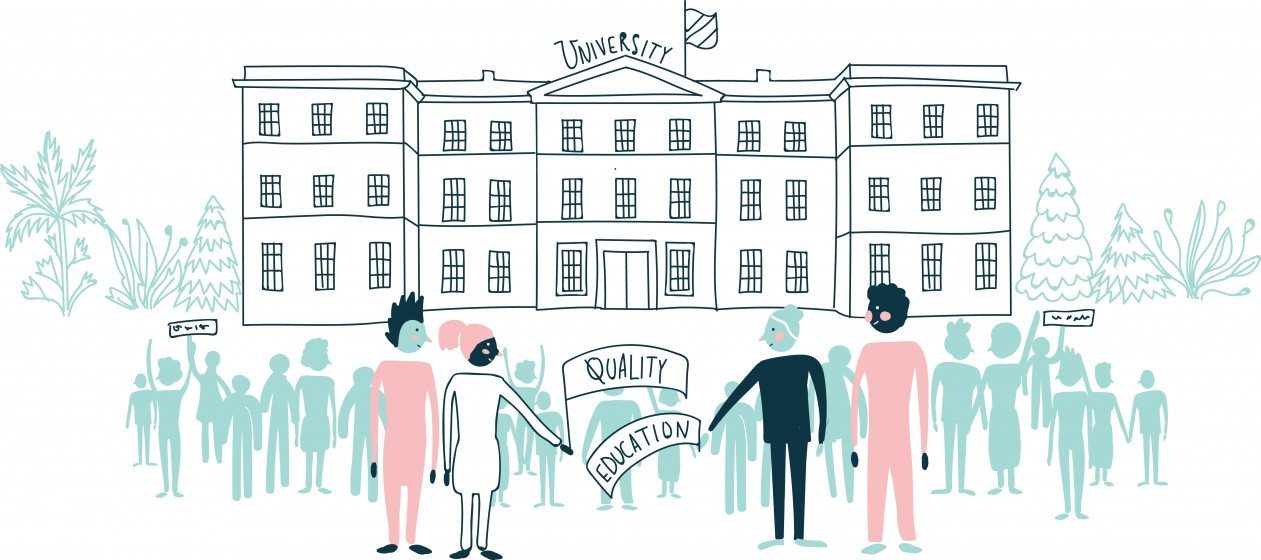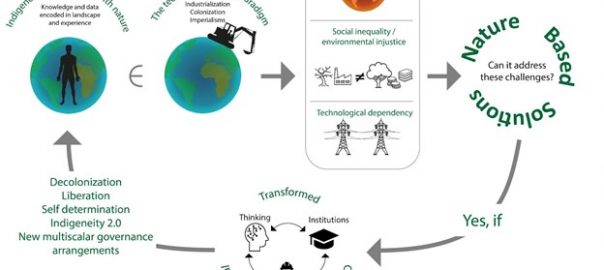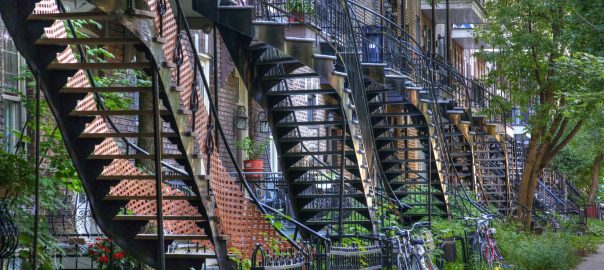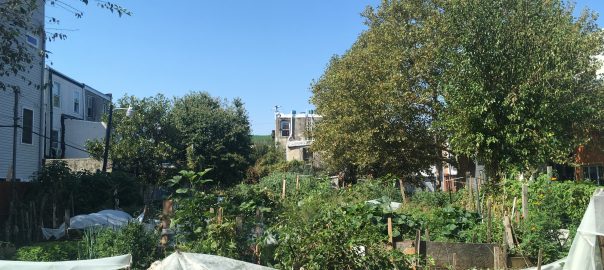
What has happened is that in the last 20 years, America has changed from a producer to a consumer. And all consumers know that when the producer names the tune, the consumer has got to dance. That’s the way it is. We used to be a producer—very inflexible at that, and now we are consumers and, finding it difficult to understand. Natural resources and minerals will change your world. The Arabs used to be in the third world. They have bought the second world and put a firm down payment on the first one. Controlling your resources will control your world. This country has been surprised by the way the world looks now. They don’t know if they want to be Matt Dillon or Bob Dylan. They don’t know if they want to be diplomats or continue the same policy—of nuclear nightmare diplomacy. John Foster Dulles ain’t nothing but the name of an airport now…The idea concerns the fact that this country wants nostalgia. They want to go back as far as they can—even if it’s only as far as last week. Not to face now or tomorrow, but to face backwards. And yesterday was the day of our cinema heroes riding to the rescue at the last possible moment. The day of the man in the white hat or the man on the white horse—or the man who always came to save America at the last moment—someone always came to save America at the last moment—especially in “B” movies. And when America found itself having a hard time facing the future, they looked for people like John Wayne. But since John Wayne was no longer available, they settled for Ronald Reagan and it has placed us in a situation that we can only look at like a “B” movie.” Gil Scot Heron, “B-Movie,” 1981
If the Negro is not careful he will drink in all the poison of modern civilization and die from the effects of it. Ultimately it will do us very little good to simply get more opportunities in the Global South or elsewhere if we do not ask ourselves and resolve the question, “Do we really want to continue to design while mimicking the kinds of socio-political society that marginalized us in the first place?” —Marcus Garvey
I penned that statement more than 20 years ago at a moment when I was striving to define my practice as an architect and interior designer. It was relevant then and remains so today as we struggle to imagine a just city being born out of the troubled world we occupy today.
I grew up in Las Vegas, Nevada during the 1950s and ‘60s. Nowhere on earth, I am convinced, is there a clearer sense of injustice towards black and minority peoples—Native Americans, Mexicans, Jews and Mormons. I learned early that the real architects building community in Las Vegas didn’t have degrees, weren’t of pedigree and didn’t work in an ivory tower. Rather, they were those laborers, dishwashers, maids, porters and nannies of color who worked sometimes two or more jobs and still found the time to confront the challenges of building community in the city that scorned them.
I never forgot the lesson of Las Vegas while attending and ultimately graduating from “majority” schools with two architecture degrees. Throughout these years of study, I never encountered peers or professors who seemed to know or care about the reality that I knew only too well.
Today my practice centers around culture, community and education—no doubt as a direct result of the revelations of my intuitive knowlege combined with the insensitivity of my formal training. I have heard, over the course of my 30 years of practice, many other black architects utter similar instances in their own lives—and more so than not I might add. Architecture remains one of the most segregated old boy professions amongst many in our present society.
The troubled composer and song writer Gil Scott Heron got it right in the 1980s, commenting on Ronald Reagan’s election, voting apathy and the politics of governance in the most powerful and advanced nation in the history of man, when he reminded us that one cannot make a “classic” out of a “B Movie.”
Emergence of a viable model for a just city capable of serving a world population projected to rise to between 9 and 12 billion people (if not more) in the next 70 or so years must begin with a new way of existing as a collective humanity.
As I have espoused before in lectures across the country, “The problem lies not in our abilities, but in our humanity.” What would it take to create a place where the rights of virtually every single citizen is not debated but guaranteed? A guarantee not mandated by laws, but by a collective will of the general populous as right and just and in the best interest of all who live in that community? How can a society realize and maintain a healthy sense of “justice” once conflict arises out of misunderstanding, personal or selfish interests? What does resolution and mediation look like in a just city? Well, one vision of conflict resolution that comes to mind is this notion of instilling each member of the collective with a strong understanding of assured consistent justice for all. This can only be done through an early, open education that is offered to all coupled with development of accountable agencies equally representative of the populous.
In a review of Paul Chevigny’s book Edge of the Knife: Police Violence in the Americas, Jerome H. Skolnick offers the following: “The dilemma of civil society is that the police are both essential and mistrusted, because they enjoy the power of exercising force. . . . Civil society has limited the legal powers of the police precisely because people mistrust and sometimes fear them.”
Skolnick then goes on to say, “At the same time, society must ask those whom we fear to protect us against criminals. That dilemma sets a challenge to a civil, liberal and democratic order. To achieve public safety we must offer the police instruments of violence. But we also need to develop institutions of accountability to limit inevitable abuses of legal authority, which will vary depending on the social order that we of the larger polity expect police to reproduce.”
To build a just city, we must turn to equitable social education as an alternative to police power, for such power will always tend towards corruption and abuse.
But we can’t stop with restructuring structures of power. As a trained architect, I am interested in defining intersections between design and culture. My teaching methodology explores justice and culture as potential place makers and form drivers along with issues of design. This vein of exploration is the virtual key for conceptualizing and deploying design solutions in my practice and especially in my academic studio, where students often are exposed to cultures of color for the very first time. Providing a broader learning experience in design is the goal here.
All of the above comes into play for me when envisioning the making of a just city. I believe we must begin with two primary, essential ingredients, three foundational rights and a collective will. The first ingredient is resistance to the norms and practices that have so far prevented justice from prevailing. The second is a quality and equitable education that is free by right to the average citizen.
Resistance
A true democratic vision for society is often blurred if not derailed by the very forces that are put in place to assure the viability of its survival. Resistance, of the collective citizenry, enough to provide a pathway for a true democratic model to emerge, is the first and foremost of the two main ingredients. The philosopher Jiddu Krishnamurti made these remarks as he responded to a student’s question, “if everyone was in revolt, would there not be chaos in the world?”
“…Is the present society in such perfect order that chaos would result if everyone revolted against it? Is there not chaos now? Is everything beautiful, uncorrupted? Is everyone living happily, fully, richly? Is man not against man? Is there not ambition, ruthless competition? So the world is already in chaos that is the first thing to realize…It is only those who are in constant revolt that discover what is true, not the man who conforms, who follows some tradition…”
Inherent in the equation for defining the just city is confronting the unjust structures that make up our world and challenging them with a collective resolve.
Education
Resistance can only evolve if the average citizen has the tools and knowledge needed to advocate for meaningful change. The will of an educated citizenry is needed to protect the rights of the collective. Only with a quality education guaranteed to each of its citizens can a community begin to value those social obligations that are the cornerstones in the construction of the just city.
This right to a quality education for all cannot be shifted, modified or changed in any way that could diminish its power. However this initiative also should not be and cannot be mandated in a just city. Today, U.S. schools are more segregated than they were in the late 1960s. Three generations after the Supreme Court’s landmark decision Brown v. Board of Education, black children still attend separate and unequal schools. As this failure of our legal system demonstrates, the right of everyone to a quality and free education cannot be set in motion through government. Rather, this understanding must lie in the hearts of the collective.
“We must create immediately an atmosphere of freedom so that you can live and find out for yourselves what is true, so that you become intelligent, so that you are able to face the world and understand it, not just conform to it, so that inwardly, deeply, psychologically you are in constant revolt,” says Jiddu Krishamurti.
The educational system of the just city must be representative and inclusive as must be all other systems. Children need to see faces that look like their own in the defining, governing, designing, construction and maintaining of the places and spaces that they live, work, play and grow.”
Foundational rights of the just city
Citizens are guaranteed the basic human services for quality of life liberty and the pursuit of happiness, such as quality air, clean water, nourishing food, proper clothing and adequate shelter.
—Individual rights are not mandated by law. Rather, they are supported by an informed leadership ably prepared to make compelling arguments to a well-educated general populous which can understand the plight of others and empathize with them.
—Diversity is respected while at the same time there is an understanding of the value of collective identity.
The collective will of the Just City
—Works tirelessly in maintaining a proper balance between economic, political, social and ecological concerns.
—Understands the importance of having a political consciousness that supports progressive movements at national and local levels toward respect for others and greater equality.
—Assures all its citizens equity in representation across the boards and at all levels.
—Seeks a balance between economic growth and social obligation.
—Assures allocation of adequate resources for desired outcomes.
—Supports a system of maintenance and of checks and balances that is clearly understood and respected.
—Maintains a high respect for maintenance, accountability and stewardship of the planet and all its living inhabitants.
Towards the just city of the future
Any society is only as strong as its average citizen. With that in mind, life in a just city will focus more on the health, safety and welfare of the average citizen than on the elite. A just city is a “bottom up” proposition where the majority of the citizens are well-educated. In this model, the average citizen is informed, empowered and has a clear understanding of a broader sense of purpose amongst a wider diversity of community inhabitants.
Whether or not we will be able to strive towards the highest ideal of a just city is largely a question of our humanity. It is up to each of us to determine whether we are up to the challenge.
Jack Travis
New York
The Just City Essays is a joint project of The J. Max Bond Center, Next City and The Nature of Cities. © 2015 All rights are reserved.












A wonderful expression: “collective will of the just city”!